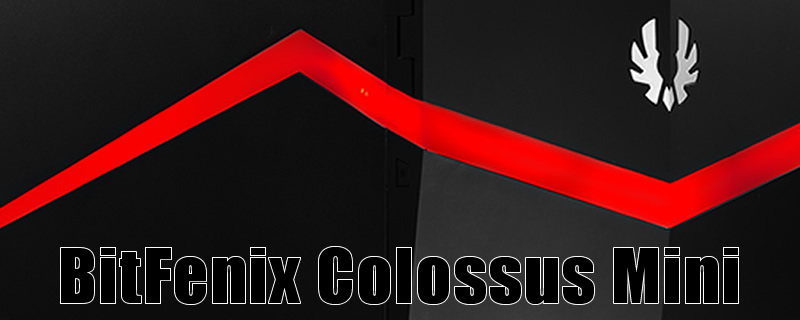BitFenix Colossus MITX Review
Conclusion
The addition of the Colossus brings the number of cases based on the established Prodigy chassis to a total of three. Having looked at the internals extensively in other reviews we’re not going to waste your time here by ploughing back over them. Suffice to say like its brethren the mini-ITX chassis version of the Colossus offers the same great water cooling capabilities along with ample storage, good clearance for CPU coolers and the ability to take long GPUs. If you want more detail than this then head on over to the reviews of either the Prodigy ITX or MATX and the more recent Phenom m-ITX. The internals ITX or MATX variant on the cases stays the same with only the externals differentiating between them.
The major changes then are in the aesthetics of the case. where the Prodigy was a hard as nails LAN cruiser yet still offering esoteric looks, the Phenom was more of a lounge/bedroom PC; subtle and stylish and able to blend in just about anywhere. The Colossus we think falls somewhere between the two. Certainly its size makes it LAN portable, albeit minus the handy dandy handles of the Prodigy, but with its light show it does have more of a wow factor than the demure Phenom. For those of you too lazy to read the full review the light show refers to the BitFenix trademarked LiteTrak that Zig-zags its way across the front and sides of the case. The strip, when in the off position, looks matt opaque white and is classy enough in that state alone. A slight depression of the stealthy button on the side of the case sees it glow red, with further depressions cycling it through Blue and Green. Further depressions of the button cause the light to pulsate gently. The LEDs themselves are actually housed in the front section of the case with what appears to be broad gauge optical fibre paths, the “LiteTrak” feeding the light from the front round the sides. To get this to work properly it’s critical that you get the tracks to line up properly when you put the case sides on.
There are some out there who will feel all a bit too gimmicky, for others it will be just what they are looking for. Regardless of how you feel about the lighting the Colossus is still a good case based on a great chassis. We say good as opposed to great as it does suffer from a few of the more disadvantageous characteristics that the Phenom did, the main one of these being airflow. With the only intake venting into the front of the case being via the small row of slits on the top leading edge, if you’re planning an air cooled build you might not want to put too much toasty gear inside, either that or swap out the 120mm fan for something a lot larger. If you’re going down the wet route then with most of your CPU cooling being done via the roof mounted rad it isn’t going to be so much of an issue. We also feel that as with the Phenom the GPU is going to be hard up against the edge of the case with no venting at all for it to suck on, and of course the presence of the LiteTrack makes modding a side window or side venting not as simple as it might have been.
From a scoring perspective it gets exactly the same as the Phenom did. Ok it has the fancy lights but that’s not enough to raise the presentation score any higher than it already is, they are both pretty in their own different ways. If anything we personally prefer the Phenom but we understand loads of you will love the lights when gaming in a dark room or to show off better at a LAN.  At £75-£80 it’s priced the same and it performs the same, and it’s also up against exactly the same opposition.  Still its a very unique case for the price so it gets the OC3D VFM award.
Thanks to BitFenix for sending in the Colossus for review, you can discuss your thoughts on the case in the OC3D Forums.




